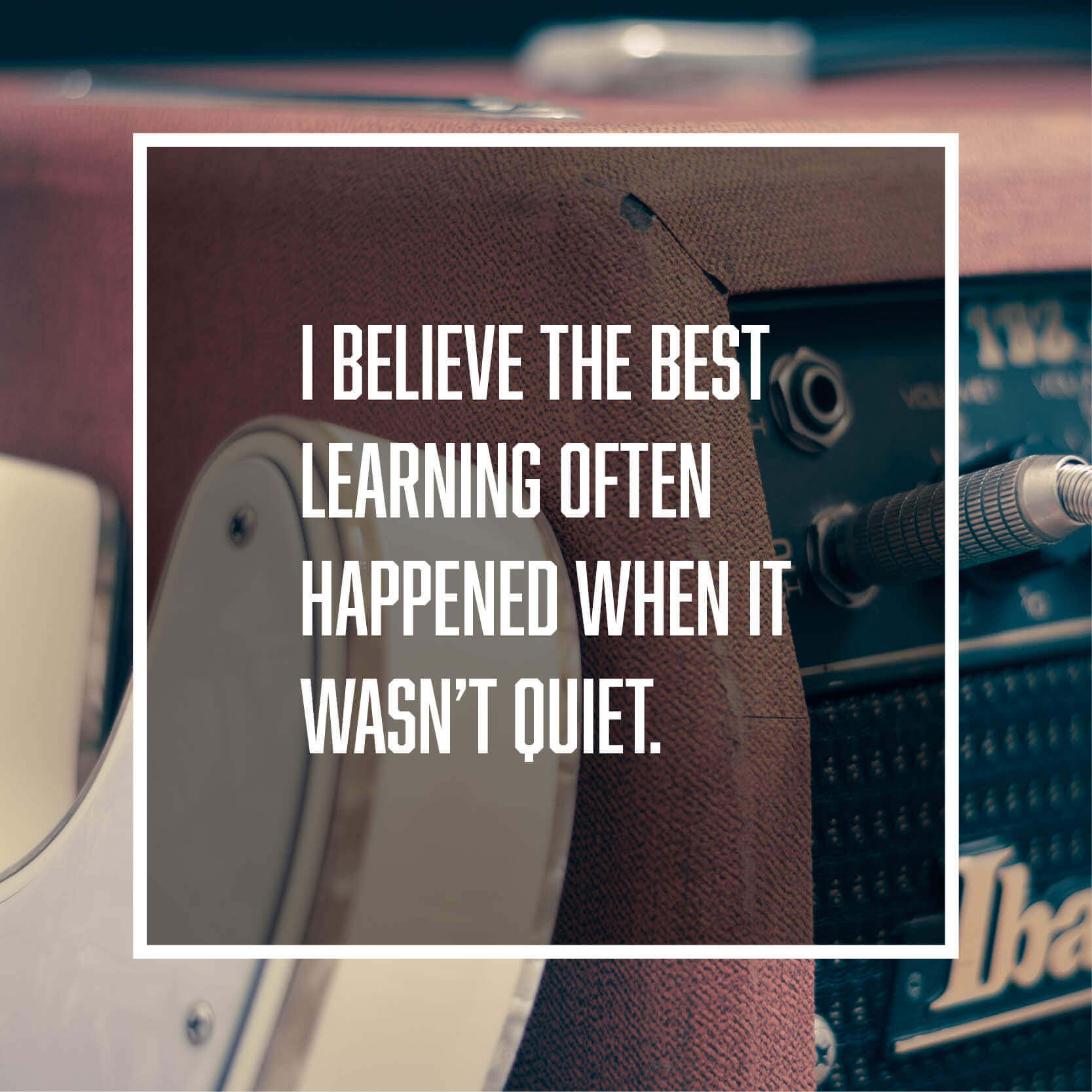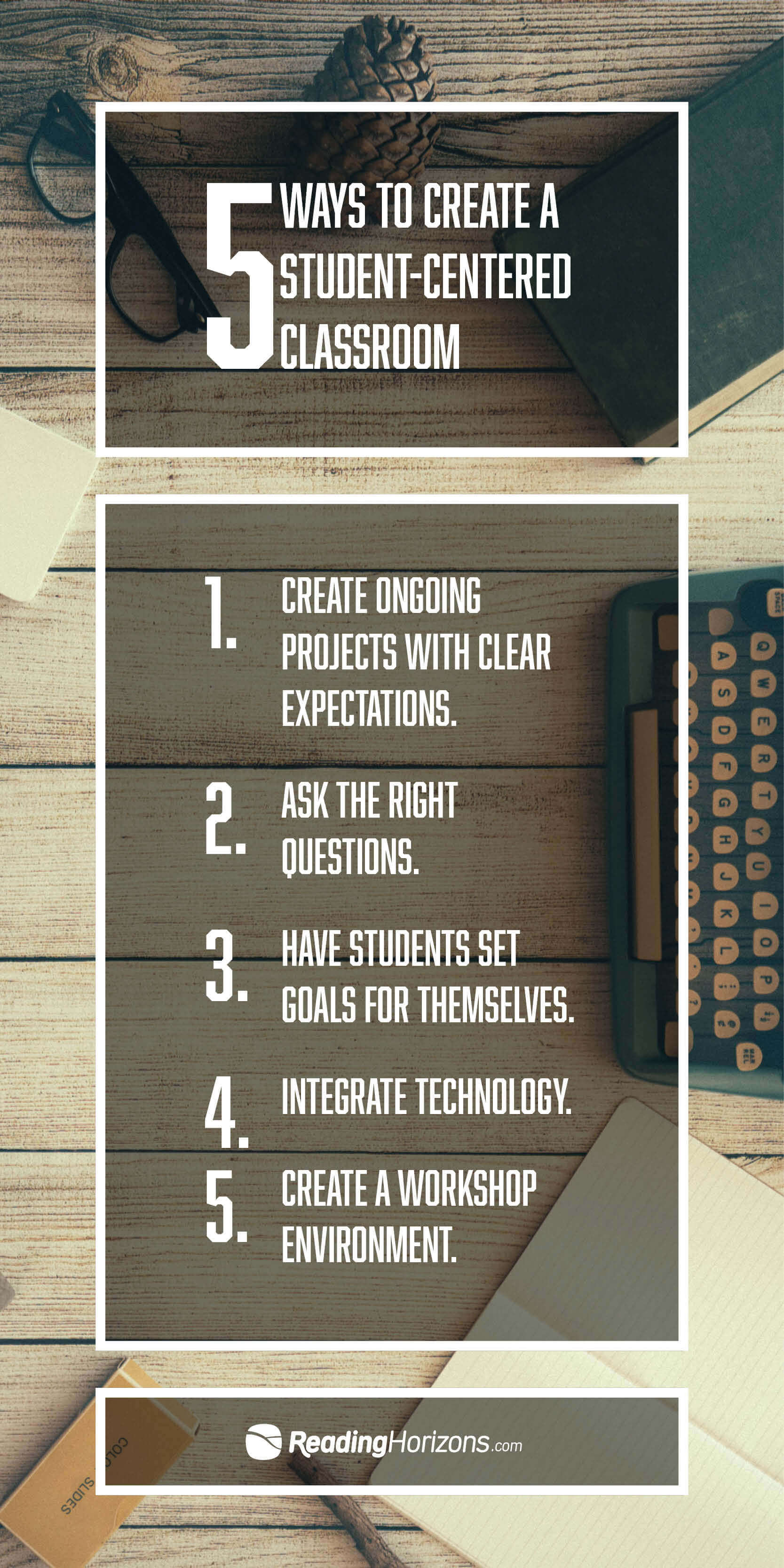Shifting from a Teacher-Centered Classroom to a Student-Centered Classroom
 I used to have a student’s grandmother volunteer in my classroom each week. She was a retired university professor, a mentor of teachers, and a well-educated woman. I loved watching her interact with my students. I respected and valued her opinion in my class.
I used to have a student’s grandmother volunteer in my classroom each week. She was a retired university professor, a mentor of teachers, and a well-educated woman. I loved watching her interact with my students. I respected and valued her opinion in my class.
One day, she said, “You’re a master teacher.” I was somewhat embarrassed by her compliment. I thanked her but responded, “You’re just being nice.” She firmly said, “No. I’ve been in a lot of classrooms and watched a lot of teachers teach, and you are a master teacher.” She then added, “Your class is also one of the noisiest classrooms I’ve ever been in.” At that point, I laughed out loud, but inside I felt embarrassed by her observation and defensive about my classroom management. She continued, “But your students are always engaged and on task, and they’re learning. They’ll never forget the things they’re doing and what they’re learning.” Coming from her, that was one of the highest compliments I could’ve been given. I worked very hard to maintain a well-managed class and to give my students an engaging and enriching learning experience.
My goal was to have a student-centered classroom. Students were given projects that engaged and fostered problem-solving, collaboration, and cooperation. I have to admit that I liked it when the students in my classroom were all sitting quietly at their desks, working independently. That said, I believe the best learning often happened when it wasn’t quiet.

My student-centered classroom was very different than what I experienced when I went to school. Most of my teachers would stand in front of the classroom and deliver information. They would give everyone the same assignment—mostly worksheets—to test our understanding of the information that had just been taught in the lesson. We’d all be required to read the same story and then answer questions about that story. I remember one of my favorite teachers let us do art every Friday, but even that was a very controlled event. We were seldom given the opportunity to choose what we’d make or what the final outcome would look like. The end result? Twenty plus projects that all looked almost identical. We had little to no technology in our classrooms. The only piece of technology that I can remember was a cassette player that we’d use to listen to audiobooks. I’d listen to a story being read to me, and then a loud beep would indicate that it was time to turn the page. Occasionally, we’d watch a movie from a projector that had two big reels on it. I don’t even remember my teacher having a computer. If she did, it wasn’t apparent to me. My first interactions with computers came much later in high school. I worked on a big IBM computer and used an operating system called DOS. We had floppy disc drives and typed in codes to get the computer to perform the tasks we wanted completed. I didn’t learn to type until high school, either, and when I did, it was on an electric typewriter rather than a computer keyboard. Technology has come a long way since I was in school. It has changed the way we interact with information on a daily basis, and it has changed the way teachers teach.
Now, most children are exposed to technology at a very early age, and by the time they enter kindergarten, they’ve had many experiences interacting with it. Teachers can use technology to change the focus from the traditional, lecture style of teaching to a student-centered approach. Using technology can enhance what’s being taught and enrich students’ learning experience.
Here are five things that will help teachers create a more student-centered classroom:
- Create ongoing projects with clear expectations.
- Ask the right questions.
- Have students set goals for themselves.
- Integrate technology.
- Create a workshop environment.

Teachers can replace traditional homework with in-class activities that engage students. Teachers should align inquiry-based projects to their objectives and course content. Students should be encouraged to work collaboratively with each other and to use technology to enhance their learning in creative and innovative ways. Students should also have autonomy while working on their projects.
Teachers will continue to play a vital role in the student-centered classroom but will interact with students in a variety of ways. The time spent lecturing is reduced, and the time spent mentoring is increased. Students engage in more group discussions and regularly receive one-on-one mentoring from their teacher. Teachers model good questioning and encourage students to ask questions. Students set and monitor their goals and are motivated by their interests and curiosity.
The student-centered classroom is a more active and engaging way to approach learning. The traditional, lecture approach changes to a student-centered approach when teachers allow students to participate in meaningful projects, integrate technology, ask questions, set goals, and let curiosity and interest guide their learning.